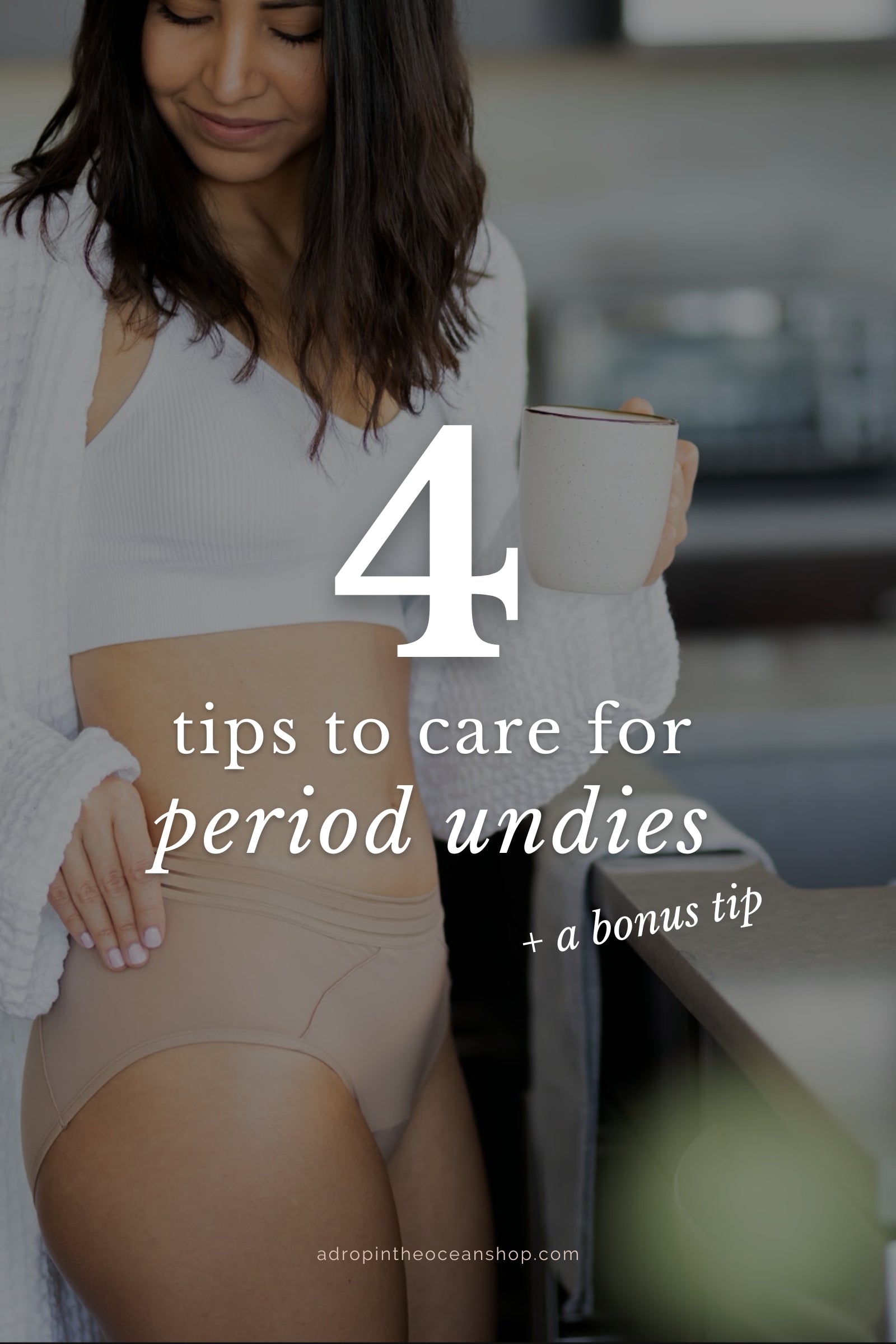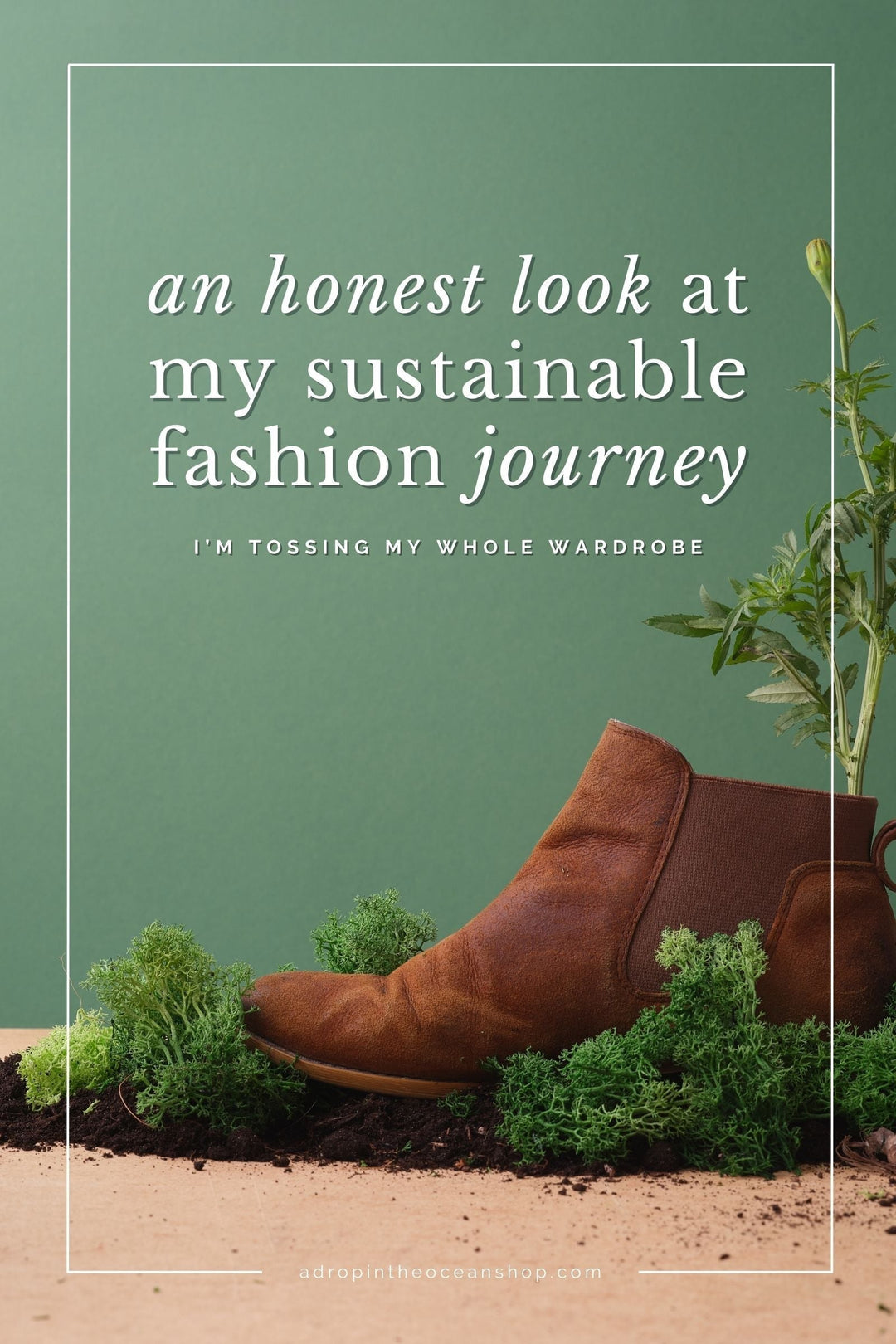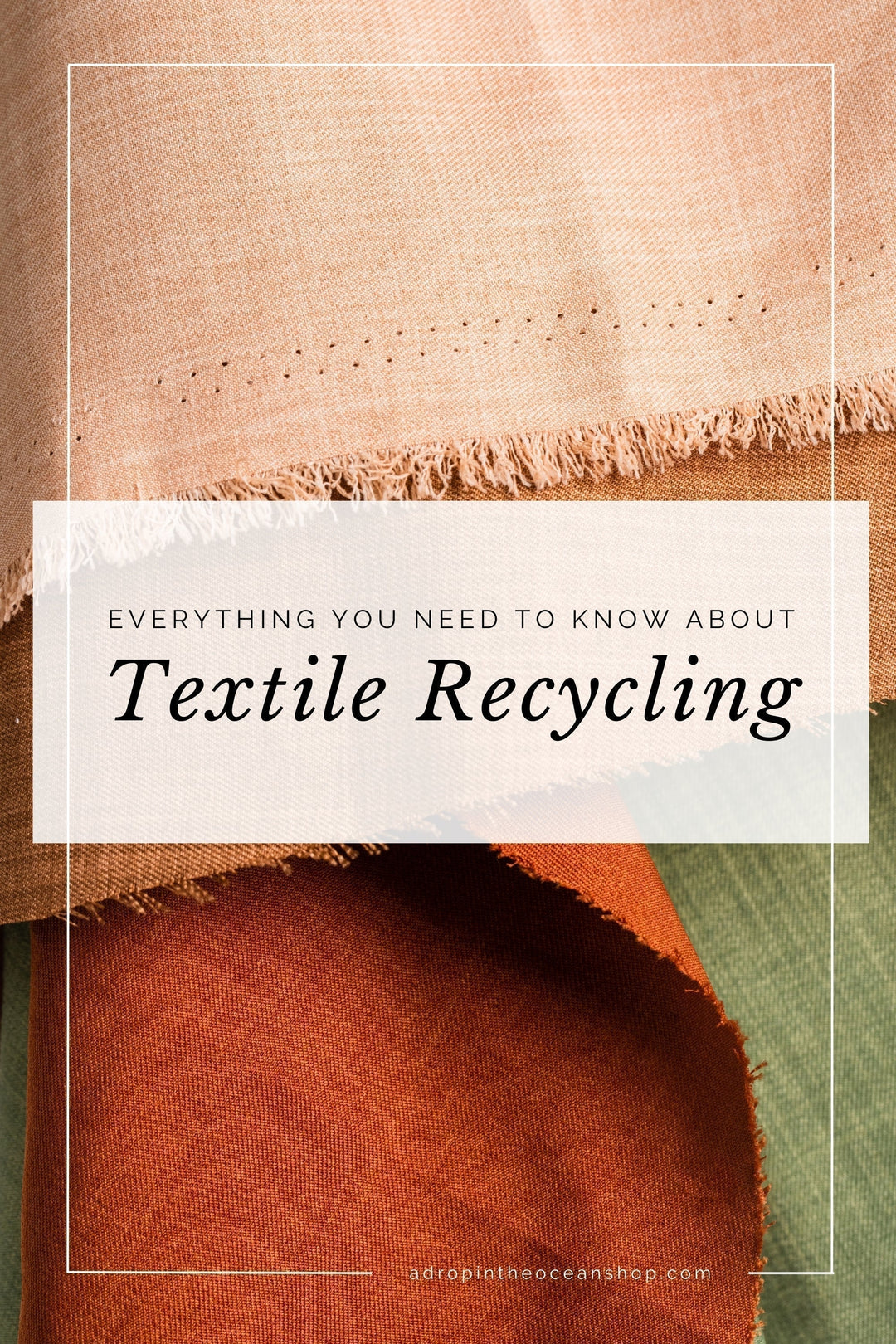How to Care for Reusable Period Underwear

This post first appeared in our weekly Make Waves Mondays email series on January 23, 2023.
Ironically, friend, I sat down Friday afternoon to write this week’s post, and almost immediately had to put it away for the day. The crampsssss 😭😭 The rest of the day was spent on the couch, heating pad across my abdomen, Aleve working its way through my system, and loads of chocolate by my side.
The ironic part of the whole thing is that I had planned all month for this week’s post to be all about how to care for period underwear. And suddenly, I found myself donning my own period undies and doubled-over in my desk chair, unable to write the dang thing lol

(If you also have miserable cramps and have found a magic solution, please do share!)
So now here we are, still rockin’ some period undies, but finally able to tell you all about them, sans cramps 😁
So let’s dive in!
🐘 First, the elephant in the room…
You may have seen the news that the period underwear brand Thinx has settled a lawsuit over PFAS (polyfluoroalkyl substances) being present in their underwear. Today’s post isn’t going to get into the nitty gritty of PFAS, but what I will say is that the brand of period undies we used to sell at A Drop in the Ocean, Saalt, does not use PFAS in their products, and are third-party tested and licensed to be PFAS-free.
From Saalt’s website:
“Because PFAS do not break down, they are becoming more and more prevalent in the world. This means that all types of products can be exposed to PFAS inadvertently in shipping or manufacturing (kind of like that warning you see on granola bars that says, “manufactured in a facility that also produces peanuts”).
Saalt has tested our products through licensed, third party facilities and results have varied between 0 and 10ppm (parts per million) which is well below the regulatory limit of 100ppm. Extremely low levels of PFAS, like 10ppm are indicative of accidental exposure through contact with equipment or other products containing PFAS. When PFAS are deliberately added to fabrics they will appear in much larger quantities.”
According to the lawsuit, Thinx period underwear (even their organic line) contained over 3,000ppm of PFAS.
If you’re interested in a deep-dive blog post all about PFAS, please let me know! I’ll be doing this research for myself anyway, since I do own and wear a few pairs of Thinx.
Okay. Now that that’s in the open…
Why switch to zero waste period products?
If you haven’t yet made the switch to reusable period products - whether that be a menstrual cup, period undies, or reusable pads - they might be a bit intimidating. They might seem “gross,” or they might feel too expensive compared with disposable.
But I gotta tell ya, friend, switching to reusable period underwear has been a freaking GAME CHANGER.
They’re not only way more comfortable than disposable pads or tampons, but they’ve saved me a ton of money, a ton of waste, and are infinitely more convenient than buying tampons every month.
So if you’re on the fence, or aren’t really sure what zero waste period products are, jump on over to our blog post all about the benefits of reusable period products and what makes them so gosh dang magical. Then come back and keep reading today’s post about how to care for them 🤗
How to care for reusable period underwear
Once you’ve made the switch to period undies, it’s important - just like anything else - to take care of them properly so they’ll continue to serve us for years to come. We don’t want our reusable alternatives falling apart because we didn’t treat them right!
That’s no bueno for time, money, or waste 🙅♀️
But the good news is, it’s actually really easy to care for zero waste period underwear, without adding extra time or energy. Because extra time and energy is the last dang thing you want when you’re feeling sabotaged by your baby box.

Step 1 | Rinse
Immediately after removing your undies (or as soon as you can), rinse them under cold water.
You’ll want to rinse them thoroughly, until the water runs clear. This will help prevent stains and odors.
Then hang them up to dry completely before tossing in your laundry bin (I just let mine dry over my shower rod).
Step 2 | Use a Delicates Bag
Period undies are designed with several layers of fabric to help absorb your flow. This means they may need a little extra support in the washing machine to keep them in tip-top shape.
I always recommend dropping them into a mesh laundry bag for delicates before putting them in the wash.
Step 3 | Wash on Cold
Although your gut reaction might be to wash your period undies on hot, you'll actually want to use a cold setting. I also recommend using a “delicate” or “gentle” cycle, for the same reasons I recommend using a delicates bag 👆
And there’s no reason to wash your period underwear all by their lonesomes!
Larger loads of laundry are more energy- and water-efficient, so definitely don’t shy away from adding them in with any other laundry you’ve gotta wash. Even if you didn’t get all the blood out in your rinse, it won’t stain any other laundry in the machine.
As for detergent, you’re gonna want to opt for a natural, mild detergent, like the refillable laundry detergent we have here at A Drop in the Ocean. A little goes a long way, works for both HE and non-HE washers, and it’s all I’ve ever used to wash my period undies. It works like an absolute CHAMP 💪
Oh btw, skip the fabric softener, bleach, and any other laundry additives. Fabric softener, in particular, leaves a coating on fabrics that repels liquids. Not exactly what you want on your period!
And then if you need a little extra oomph in your wash cycle, drop an oxi-boost pod in the drum for some extra odor- and stain-fighting power.
Step 4 | Hang Dry
If you’ve been here a minute, you know I’m alllll about hang-drying my laundry. You don’t need to hang them outside. You don’t even need a large space with lots of windows.
Hang-drying laundry has so many benefits, and especially with delicate pieces like reusable period underwear, hang-drying will help them last longer.
The high temperatures in dryers can actually degrade the fabric and the elastics in your period undies over time - making them less absorbent and odor-resistant. Let’s try to avoid that, mkay?
BONUS TIP | Vinegar Rinse
If you find your period undies have a bit of an odor to them after several uses, give ‘em a little extra love with a vinegar rinse!
Fill a sink or bucket with a vinegar and water mixture, toss in your undies, and let them soak for 30 minutes or so, then throw ‘em in the wash. Easy peasy.

So, friend, if you take a few moments to care for your reusable period undies with intention, they’re going to last you years to come - and save you buckets of money in the process. They’re a win-win for you and the planet, and I can promise you that I, for one, will never - ever - be going back to disposable.
If you’re still on the fence about zero waste period products, what questions do you have? Comment below and ask away! I’d love to chat with you!









Thank you for this insightful post! As someone who is passionate about sustainability and reducing waste, I found the tips on caring for reusable period underwear extremely helpful. It’s great to see practical advice on how to extend the lifespan of these eco-friendly products and make them last longer. Your blog has inspired me to continue making environmentally conscious choices in my daily life. Keep up the fantastic work!
Reusable period products were my first sustainable swap to start reducing my waste. I love how options are becoming more evolved and Mai stream!
Leave a comment